| A couple of days ago a reader (andy) said that he got a RH loom for Christmas and is having a hard time finding SCA appropriate projects for the loom and asked if I could post with some ideas. While I do not at the moment have drafts or project sheets drawn up for specific projects, I can absolutely post information on things you can create (even as a new weaver) on the RH loom for the SCA! Rigid Heddle weaving in period was used to make narrow bands (and were often used in conjunction with band looms). While I have never seen the wide rigid heddle looms we have now from the SCA period, that does not mean that they cannot be used to produce items for SCA use, display or competitions! RH weaving at its simplest produces a tabby woven cloth (also known as plain weave) and that structure can be seen throughout history. |
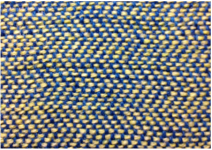 Herringbone twill woven on the RH loom. I turned the samples I did for this into pouches for my BF and for largess.
Herringbone twill woven on the RH loom. I turned the samples I did for this into pouches for my BF and for largess. I highly recommend either of these two books to the new weaver:
- Hands on Rigid Heddle Weaving by Betty Lynn Davenport
- Ashford Book of Rigid Heddle Weaving by Rowena Hart (this one is out of print for the moment, but you might come across one used at a decent price)
If you are like me, you do not want to create something just for the purpose of practicing. You want to make something that one can actually use. So, some starting items that I can suggest are:
- Weave a few narrow pieces in wool (Harrisville Shetland is a fantastic 2-ply yarn that works very well in a Rigid Heddle loom). This gives you practice time weaving, as well as the chance to get comfortable working with wool (a most fantastic fiber). Narrow cloths can very easily be sewn up into bags or pouches! Make them for yourself, friends or as largess! Everyone loves handwoven goods and items like this are sure to be used and admired for many years. (I will work on an article with specific instructions for this after I finish weaving some more fabric. For now, there are likely quite a few tutorials for fabric pouches online. They really are simple!)
- If you happen to have one of the larger looms, wider fabric can be turned into coverings for benches or boxes in tents, narrow runners or small rugs for the floor or even pillows.
- Remember that you do not need to weave the full width of the loom! Narrow bands can be woven as straps, belts or trim.
- With a 28-48" wide loom you could also weave enough fabric to create heavy woolen garments (remember that the highest thread count produced with one rigid heddle is 12.5 threads per inch). This could become cloaks, hoods, hats, or even something like a tunic if you need warm weather gear. (Depending on your loom, you might need to weave two lengths of cloth to produce enough yardage for one of these larger projects.) Something like a Norse Aprondress would work fabulously on this type of loom if you choose a style that is more conservative of fabric! NOTE: After weaving a piece you will need to wet-finish the garment, and this will shrink it a bit, so weave test swatches first to get an idea of how much it will shrink so that you can weave enough for your final item.
Of course, weaving, even on an RH loom, does not end with tabby! Most looms have the ability to add a second heddle. This allows you to weave items in plain weave twice as fine as you could previously (two 8 inch heddles would weave at 16 ends per inch, or two 12.5 would weave 25 threads per inch). While much of the fabric from upperclass graves, even in early periods, tended to be much more fine than we often imagine, a 24 or 25 thread per inch cloth is more than suitable for Viking garments. (I have not done much exploration on garments later in history, so that would require some research to figure out what thread count is appropriate to accurately reproduce something.)
Further, the use of a second heddle allows you the option of more complex weaves! Yes, you can weave twill on a rigid heddle loom! Two heddles can easily let you weave three shaft patterns with a little extra effort. Ability to weave twill means more options for garment creation and even for narrow items like men's winnegas/wicklebander (Viking legwraps). In some times and places, twills of various sorts were more common that tabbies.
A second heddle also allows for doubleweave, a technique that can allow you to make cloth that is twice as wide as your loom's weaving width. (This could make an excellent cover for a chair or cot at events!)
And it does not stop there! You can add a third heddle and move on to weaving many things that would normally require a 4 shaft loom. If you make it to Pennsic, I believe that Dread Countess Seelie is the one that teaches how to use the rigid heddle loom to reproduce a broad range of historic textiles. I have not made it to her classes (yet!) myself, but I know quite a few people who have and who have said only good things about her teaching. I did get a chance one year to have her show me a bit of her weaving that was set up at war and I was quite impressed.
I will finish this article with a few additional tips specifically aimed at the new weaver:
- Experiment a lot. For SCA use, you will want to avoid some of the bulky knitting yarns with many plies, but if you already have those in your stash from other hobbies, use them to practice with before spending more money on better yarns. Experiment with different brands of yarn, different types of wool (shetland, merino, etc), practice plaids and stripes, pick-up patterns. Play around with the loom as often as possible!
- Play with spacing of the yarn. Try the same yarn in two different reeds and see what it does to the density of the cloth. Wet-finish it different ways (hot water with friction, versus warm water with no agitation) to see how the final cloth differs. Knowing this before you attempt larger projects is very useful and can help you avoid errors during finishing that might make you unhappy with your final resulting cloth.
- I think that 2-ply fingering weight yarns work well for many SCA projects. Try to use wool (or wool blends if that is what you have access too or can afford) when possible. If you are making something for a competition, it is best to have an understanding of what historically would have been used for your item in period. Put that information in your research documentation as well as information on which type of loom you would have used in period as well. It is always know how it was done back then, even if we use a more modern means of reproduction. Rug wool is, of course, nice for rugs!
- Lace weight yarns (and singles) can be exceptional for projects, but might fray too much (resulting in broken threads) if you are using the RH to beat the weft into place. If you find this is the case, use the RH to change the shed, but beat it into place with a weaving sword - a beveled piece of wood meant for packing the weft. One can also use a pick up stick with a beveled edge for this purpose. This will reduce friction on the yarn and will result in less broken threads.
- Learn about colors used historically. There are many members of the SCA who do amazing work with dyes who can guide you when it comes to learning who had what colors throughout history. There are many modern variegated yarns that are quite appealing to the modern eye, but that are also quite wrong for recreation purposes. Learning what colors were used historically can aid in perfecting a project (as well as making for better documentation for A&S displays). And if you cannot resist those lovely modern yarns, there are always scarves that can be made for non-SCA holiday gifts!
- Remember that things will go wrong. Warp tension can be off, threads can break, you can mis-thread the loom or colors. It will all happen at one point or another and it is all a learning experience. learn from it and continue to weave.
- Finally, enjoy your new art form of weaving!
The looms that I prefer for RH weaving are my small Schacht Cricket loom and my 32" Ashford.
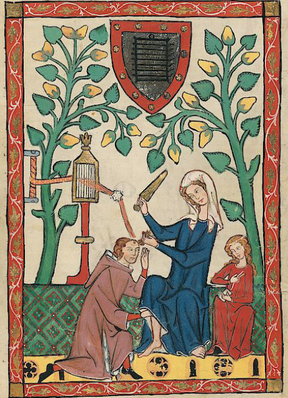
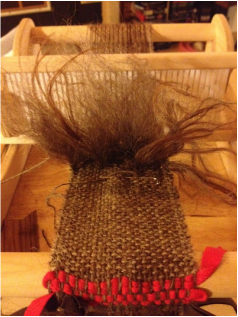
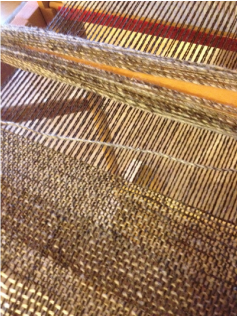
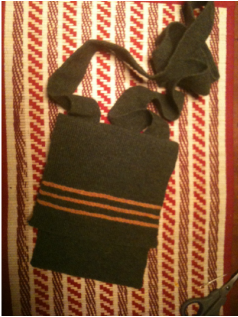
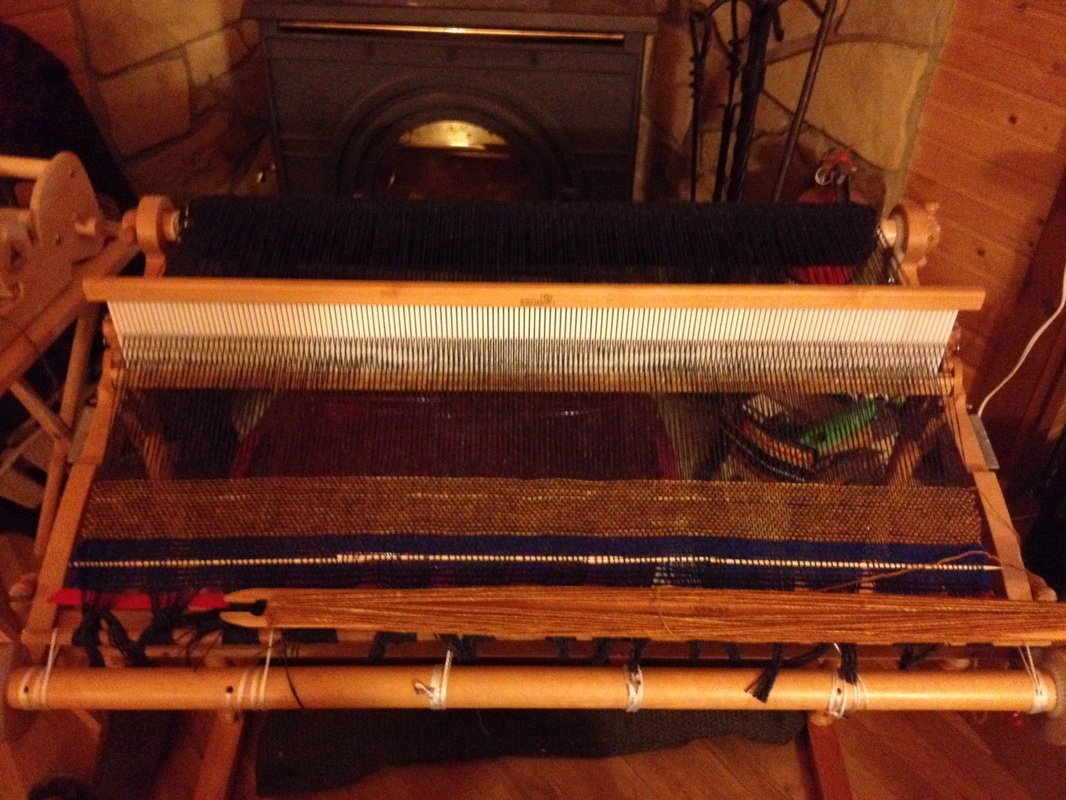
 RSS Feed
RSS Feed